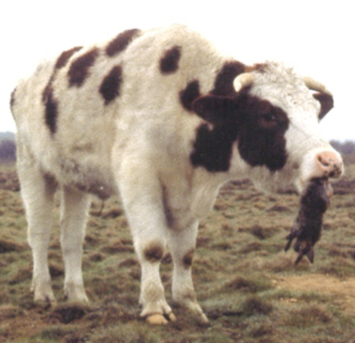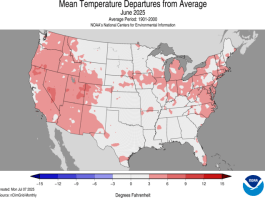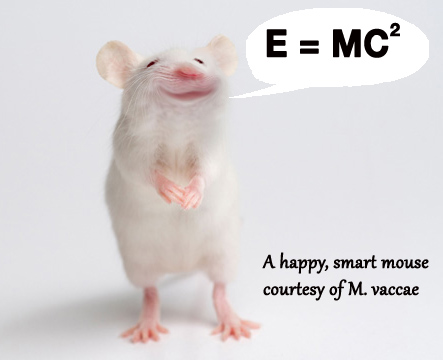Thanks to Randy Comeleo, Program Advisor, Agriculture and Wildlife Protection Program, Benton County, Oregon, and Oregon Small Farm News for this excellent article!

Livestock losses are an unfortunate reality of ranching and the use of traps and snares is a common way to attempt to reduce predator-livestock conflict. However, one USDA study (Shivik et al. 2003) noted that for many types of predators, there is a paradoxical relationship between the number of predators removed and the number of livestock killed. Surprisingly, these researchers found that as more predators were removed, more livestock were killed.
Similarly, in a 14-year USDA study at the University of California Hopland Research and Extension Center (Conner et al. 1998), researchers found that trapping of coyotes did not reduce sheep losses. In fact, scientists found that as trappers worked more hours, more lambs were killed by predators. The unexpected results in these studies can be explained by the reproductive strategy and territorial behavior of highly social predators like the coyote.
In populations exploited by humans, coyotes compensate for reductions in population with increasing immigration, reproduction, and pup survival rates. In one study, nearby coyotes replaced removed coyotes within a few weeks (Blejwas et al. 2002)! In the words of one researcher, “Killing coyotes is kind of like mowing the lawn, it stimulates vigorous new growth.” In order to sustain larger litters of pups, breeding adults are compelled to seek larger prey. Nearby sheep – usually ignored by adult coyotes in an unexploited, stable population – become a ready source of food. Thus, a system of snares can become the machinery of a self-perpetuating cycle of death for both coyotes and sheep.
Research has also shown that the disruption of social structure caused by lethal control can contribute to increased livestock loss. Most coyotes do not kill sheep. Sheep-killing coyotes are usually older and bolder breeding adults in exploited populations trying to provide food for large litters of pups in the absence of sufficient natural prey (Jaeger et al. 2001). Because of their indiscriminate nature, snares not only kill non-target wildlife such as deer, raccoons, and birds, but they also kill “non-offending” coyotes who may simply be trying to access prime rodent habitat in sheep pastures. In fact, snares have been found to preferentially kill non-offending, subordinate – yet often territorial – pack members, rather than sheep- killing older, wiser, breeding adults (Sacks et al. 1999).

Guard dog puppy and lambs. Photo by Louise Liebenberg
When non-offending, subordinate, territorial coyotes are killed, social structure and territorial behavior are disrupted, allowing nearby depredating coyotes (that were formerly excluded) access to livestock (Jaeger et al. 2004). In other words, “well-behaved” coyotes can actually prevent livestock losses by defending a territory which may overlap sheep pastures – effectively excluding interlopers from neighboring packs who may have learned to kill sheep. Protecting livestock by using one predator to repel another gave rise to an expression that makes predation management researchers chuckle: guard coyote (Shivik 2014, p. 74).
Predation management researchers are not the only ones who have observed this relationship between livestock and coyotes. Writer Michelle Canfield raises grass-fed lamb in the Snohomish River Valley and told the following story about “guard coyotes” in her blog after visiting Jon Carter, an advisor to the Oregon Pasture Network, at his farm in Scio, Oregon:
The more selection pressure they face, the more they rise to the challenge and increase reproduction. So the last thing we want to do is go on a killing spree; because the population responds exactly opposite to what we’d prefer. We kill one coyote, we might get three more vying for his spot in return. Indeed, this notion was confirmed by a man I met who ran guardian dogs with his sheep, and generally left well-behaved coyotes alone.
Jon discussed a bit on living in balance with coyotes, and how he used to feel tempted to shoot any coyote he saw. Until one day he shot a coyote in the distance that was minding its own business, during a period of time when he’d had almost zero sheep losses to predators. Lo and behold, the next few weeks, he started getting “hits” from a new coyote who had moved in to fill the now-dead coyote’s niche. It convinced Jon to focus on only removing known problem coyotes, not all coyotes!
 Predation management experts say that a properly implemented non-lethal predator control program should considerably reduce the need for lethal control. Therefore, lethal control should not be necessary except as a last resort to selectively target and kill a demonstrably habituated, dangerous, or chronically depredating individual.
Predation management experts say that a properly implemented non-lethal predator control program should considerably reduce the need for lethal control. Therefore, lethal control should not be necessary except as a last resort to selectively target and kill a demonstrably habituated, dangerous, or chronically depredating individual.
If a pair of coyotes is not killing livestock, their dominance over the territory typically excludes sheep- killing predators and helps to prevent livestock losses (Shivik et al. 2003). Thus, the territorial behavior by a breeding pair of “well-behaved” coyotes is one of the best reasons for using non-lethal deterrents for predator management.
What Non-Lethal Methods Can You Use?
Read on for Part 2 in this series that discusses the results for Benton County farmers and ranchers who tried out non-lethal methods.
Literature Cited
Blejwas, K. M., B. N. Sacks, M. M. Jaeger, and D. R. Mc- Cullough. 2002. The effectiveness of selective removal of breeding coyotes in reducing sheep predation. Journal of Wildlife Management 66:451-62.
Conner, M. M., M. M. Jaeger, T. J. Weller, and D. R. Mc- Cullough. 1998. Effect of coyote removal on sheep depredation in northern California. Journal of Wildlife Management 62:690-99.
Jaeger M. M. 2004. Selective targeting of alpha coyotes to stop sheep depredation. Sheep & Goat Research Journal 19:80-84.
Jaeger, M. M., K. M. Blejwas, B. N. Sacks, J. C. C. Neale, M. M. Conner, and D. R. McCullough. 2001. Targeting alphas can make coyote control more effective and socially acceptable. California Agriculture 55:32-36.
Sacks, B. N., M. M. Jaeger, J. C. C. Neale, D. R. Mc- Cullough. 1999. Territoriality and breeding status of coyotes relative to sheep predation. The Journal of Wild- life Management 63:593-605.
Shivik, J. A. 2014. The Predator Paradox – Ending the war with wolves, bears, cougars, and coyotes. Beacon Press, Boston, Massachusetts.
Shivik, J. A., A. Treves, P. Callahan. 2003. Non-lethal techniques for managing predation: primary and secondary repellents. Conservation Biology 17:1531- 37.





It’s a funny thing, but the ancestors back east acquired livestock from family in the South, after the Spanish tried to explore the area. When the english arrived, we had herds of cattle, horses, hogs, and so on to trade. We suffered few if any losses to wolves, tho mountain lions were a problem. Colonists had to pen their stock nightly or lost a lot of them. We do not kill predators without good reason–note, please, this is Biblical, as well. Fact is, in times of drought, the ancestors would take older animals, well past their prime, and kill them where the wolves tended to gather. But, any animal taken by them would cause a hunt for the perpetrator. Like Pappy said, wolf is sacred, but Wolf of times needs to be reminded he also makes great fuzzy underwear. walk in beauty
Interesting article, the photo of the coyote and the cow shows what I call predator desensitization. An easily taught Stockmanship skill, very transferable to human interactions with livestock. Although much of the focus of the article is towards sheep and coyote presence and interactions. Coyote presence and interactions are key in monitoring apex predator presence in a cattle operation. http://www.rancherpredatorawareness.net
Excellent article showing once again the importance of looking at the big picture when solving problems. Indiscriminate killing usually doesn’t work for long in ecosystems because nature abhors a vacuum. Pests, be they weeds, internal parasites, or coyotes need to be “farmed” or managed rather than eradicated.
Our neighbor hood is relatively wild with bears, coyotes, and lots of deer. Our dairy cattle and chickens are outside when ever it is not snowing. calves are pasture born. We have never killed a coyote. They have never injured or killed one of our animals. Coyotes are very territorial. If you start killing them, new ones will move in and the new ones don’t know the rules. In addition the coyotes help limit the deer population
Thanks very much for confirming my beliefs regarding coyotes! On this small grazing farm we live comfortably with local coyotes. This article will be shared with neighbor farmers who harbor differing sentiments toward coyotes.
Thank you!
Thanks, Kathy, for pointing to practical research which may challenge us. Barbara Kingsolver’s novel “Prodigal Summer” explores conflicting attitudes toward coyotes moving east. From the Guardian review:
‘Kingsolver, a former biologist and journalist, has a rare ability to communicate widely what she knows as a scientist, and this novel sounds warnings against hunting predators who compensate by breeding faster… The ecosystem reestablishing itself…is seen as a common habitat, not a wilderness to be kept at bay from the farmland. As Deanna says of hunting coyote: “It’s not just one death. It’s a piece of the world turned upside down.” ‘
Comments are closed.